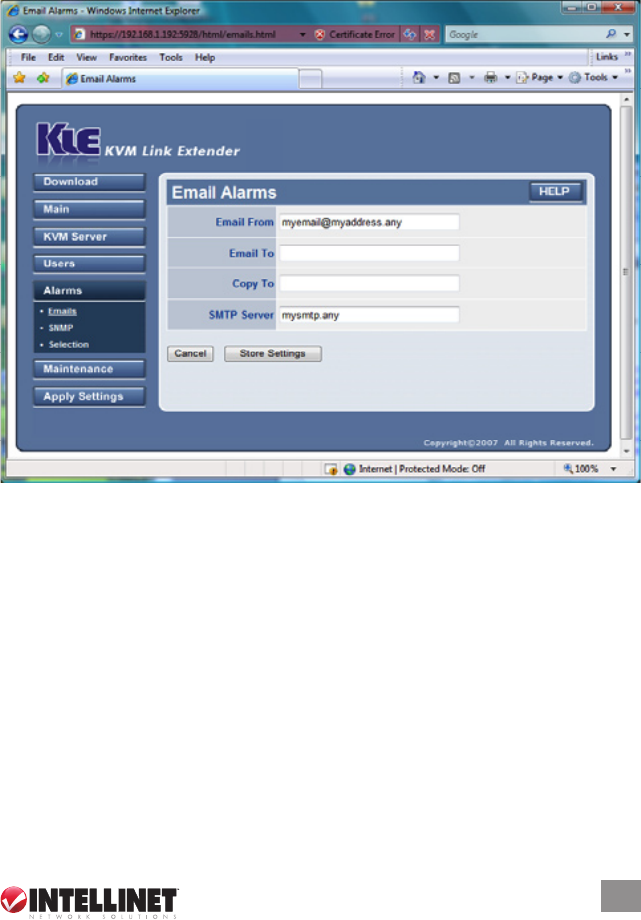
information. IMPORTANT: Only when “User Password” has been selected as your password
policy will the currently connected users be registered and shown on this screen. If you’re using
other password policies, such as “No Password” or “Global Password,” connected users won’t
show on this screen since these policies imply that the distinction of user identities is not
necessary. (For details about password policies, refer to the Security section.)
Alarms: E-mails
This screen allows you to set up the e-mail notication for alarm events. After you’ve made all
modications, click “Store Settings,” then “Apply Settings”/“Restart Servers.”
E-mail From
Sender e-mail address used by the switch for alarm e-mails. This address can help identify
which switch is the sender, and must be accepted by the SMTP server.
E-mail To
The e-mail address(es) of any switch alarm e-mail addressee(s). NOTE: You can use commas
for multiple recipients: support@myaddress.net, emma@international.com, joe@netview.co.jp.
Copy To:
The e-mail address of addressees who should get a courtesy copy of alarm e-mails.
SMTP Server:
Enter the name or IP address of the SMTP server (mail server) that will route the switch’s
e-mail alarms to recipients.
Alarms: SNMP (Traps)
This screen allows you to set up the e-mail notication for alarm events. After you’ve made all
modications, click “Store Settings,” then “Apply Settings”/“Restart Servers.”
55
MANAGEMENT OVER A BROWSER


















